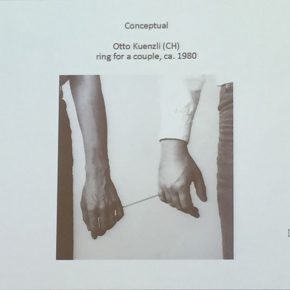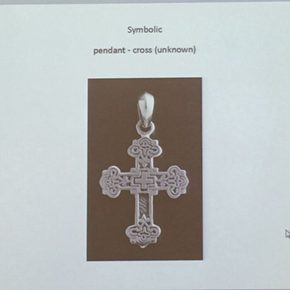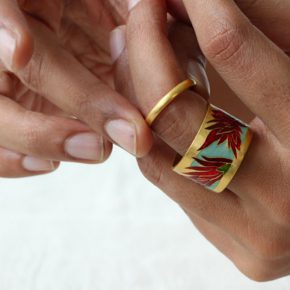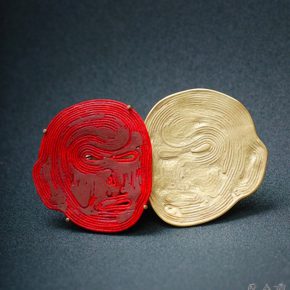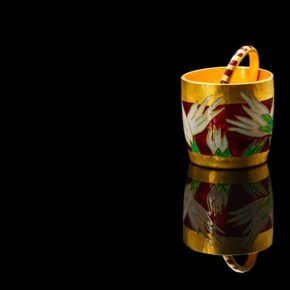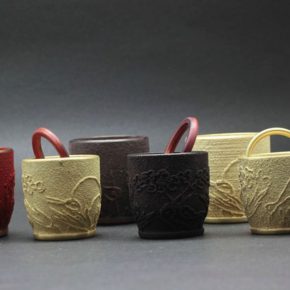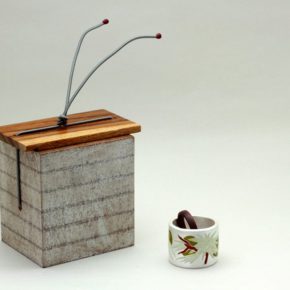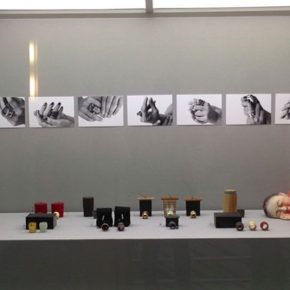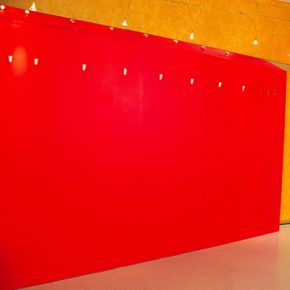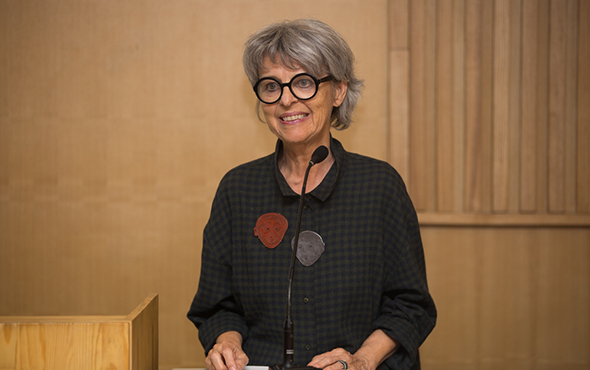
At 18:30 on May 3, 2017, the lecture “Lost and Re-sought in the Cultural Jungle” was held at the Red Chair Auditorium of the Central Academy of Fine Arts. The speaker was Prof. Esther Brinkmann from the Geneva Academy of Fine Arts, a founder of the jewelry specialty and a jewelry artist, while it was the second time for Brinkmann to give a lecture in CAFA, the previous one was 10 years ago. The lecture was chaired by Prof. Teng Fei, the founder of the jewelry specialty of the Central Academy of Fine Arts.
Prof. Teng Fei first introduced Esther Brinkmann to the audience. Esther Brinkman was invited to participate in the Qingyun’s residency program at Qingyun International Art Center, and took an opportunity to return and give a lecture in the Academy, communicated with the future young designers in China, on the creative experiences in the cross-cultural context during the last ten years, to share her thinking and practice of the concept of “author jewelry” in the past, present and future.
What are the characteristics and definitions of “author jewelry”? What is the difference between “author jewelry” and the jewelry and luxury things from a common sense point of view? What is the difference between the creator and the jewelry designer? Starting from these questions, Esther Brinkmann gave a speech.
Switzerland is world-renowned for the design and manufacturing of watch and jewelry and Switzerland has been providing young people with professional handicraft education for more than 100 years, thus a complete set of advanced education systems in art and design have been formed. The design talent can become both a professional jeweler and an independent designer, and this type of independent jewelry producer is called “the author” by Esther Brinkmann – they create their own unique artistic language through jewelry creation and convey their feelings of the world through the works.
The works created by these “authors” can be categorized as “author jewelry” or “art jewelry”, which are the combination of individual working methods of jewelry artists and technical means, and they are ultimately presented through a material selection and the expression of shape. The spirit of “author jewelry” is independent of the industrial background and tends to be marginalised. Different from the conventional luxury jewelry, “author jewelry” is no longer the representation of social status and wealth from a traditional concept, but the personal views and expression of values of the artist.
“Today, the meaning of jewelry is no longer confined to a symbol of gender, race, culture, religion, as it also offers more personalized information, representing a personal will. Jewelry is a media to reveal personality, and people can convey personal beliefs and positions to the world through it, playing the role of the bridge for the communication between the individual and the public. The work of art jewelry is also a dialogue between the artist and the wearer, for the wearer, wearing means ‘I choose’, then the behavior of wearing itself is conveying and interpreting in the meaning of this work to the others. Seen from this perspective, I think that jewelry is the art of public space.
Esther Brinkmann’s “author jewelry” is divided into 4 forms including conceptual work, sensual work, poetic work and symbolic work: the conceptual work acts on human reason; the sensual work is associated with the human body and senses; the poetic work stimulates people’s imagination on an human’s sense and psychological level; the symbolic work is the password of the faith of the world. Like other art forms, jewelry art can also convey the creator’s ideas and strength.
In Esther Brinkmann’s design concept, jewelry is not only a decoration, but can go beyond the shackles of the decoration, to meet other requirements. Wearing jewelry is a dialogue with the body, feeling and mind, an external manifestation of people’s internal state, it emphasizes and calls human feelings as an independent individual. The behavior of choosing and wearing changes the body contours and the way of movement, thus affecting people’s behavior and performance. Jewelry can also change the perception of part of the body, so that the body can feel excited while arousing or revealing the potential desires of different individuals.
In the second phase of the lecture, Esther Brinkmann explained her works at different stages. In the creative ideas of the “Double Ring” series, she tried to discuss the relationship between the object and the body. The ring can be seen as a container for holding a finger, like a vase that accommodates and cherishes bouquets. When one wears the “Sphere” series, his/her knuckle is completely wrapped, and still bending freely inside the ring. The “Bell” series consists of metal and fabric, and the part of loose metal is relying on fabric to be fixed on people’s finger. The works of “Vases” are a set of twins, and each pair is made up of two different materials: gold and jade, silver and gypsum. Esther believed that the “author jewelry” should be very cautious in the creation of a material selection, behind each material selection it contains the connotation which attempts to be expressed by the author.
Then, Esther shared the experience of her long life in China and India with the audience. The artist’s source of inspiration is not limited to architecture, painting, music and dance, while he/she also needs to experience different life experiences, interpersonal relationships and cultural landscape, and turning this sensible intuition to inspiration. Artists need to think of the proper way to express the inner world in the cultural jungle.
After coming to China, she was inspired by the Changing Faces of Sichuan opera and began the creation of the Red face and Double series, conveying her doubts and uncertainties at one stage while also exploring the ontology of the issue of “Who am I”. The colorful Indian inspired Esther to begin attempting to change the previous monochrome faces of works and apply strong colors and decorative elements in the work.
Packaging is also an important part of the “author jewelry” which can’t be ignored. Esther personally designs the packaging for each work and calls it the“renewable happy.” Since then, Esther talked about the essential issue for the creator – how to sell the work. In Europe, the jewelry gallery plays an important role between the designer and the public, and the majority of the “author jewelry” sale through galleries. For jewelry creators, how to arrange the exhibition is also a question for the communication with the public, the creator needs to show the work to the public with a better and more intuitive manner.
Ten years ago, “author jewelry” was still an unfamiliar concept for Chinese designers, however, with the development of art education, more and more designers living in the Chinese cultural environment currently want to begin to focus on it and conduct a personal creative practice. Jewelry moved beyond the limitations of the traditional definition in the contemporary context, to be a medium to display the individual existence, a bridge connecting the self and public space, and the jewelry designer who is as the “author” also has the freedom of the artist.
Text by Du Mengqian, translated by Chen Peihua and edited by Sue/CAFA ART INFO
Photo by Yang Yanyuan/CAFA ART INFO
(Images of the works are from the network)







